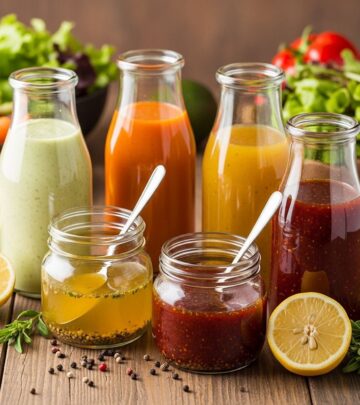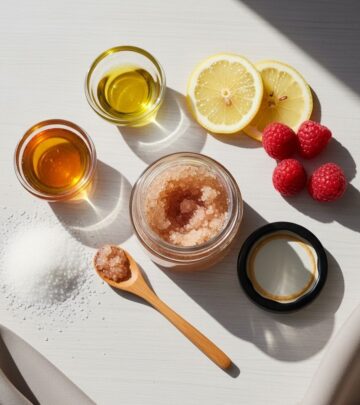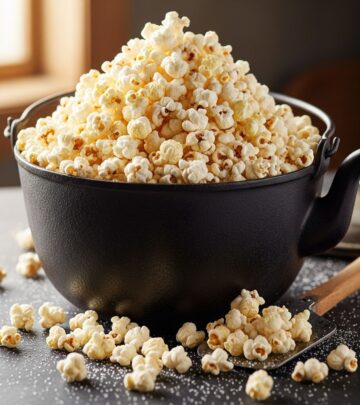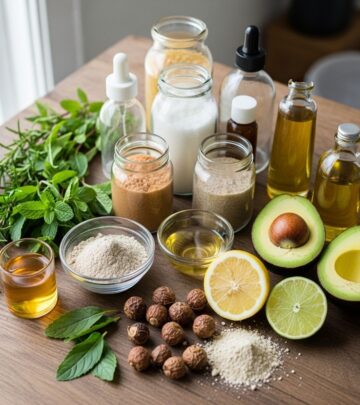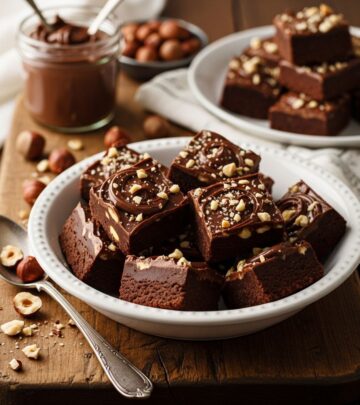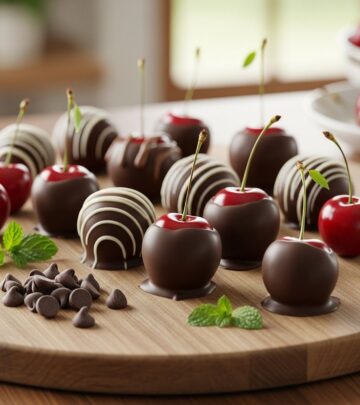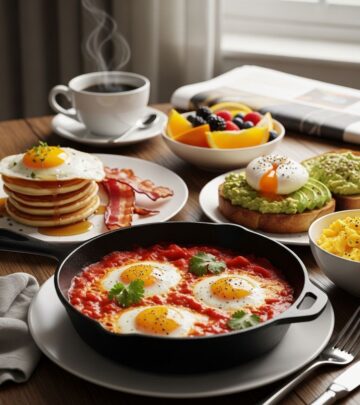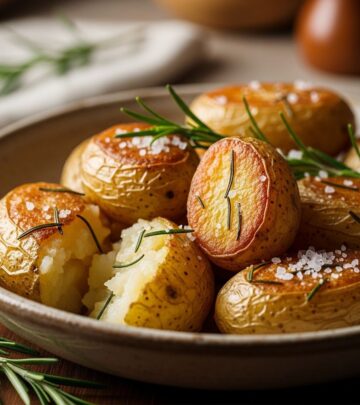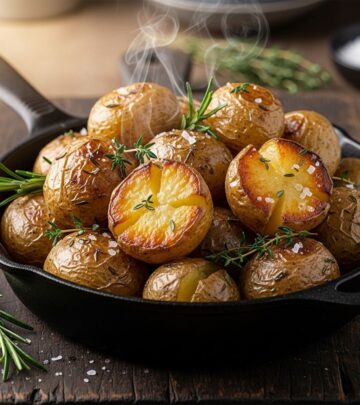Blini Recipe: 8 Simple Steps To Authentic Russian Pancakes
Discover how to make tender, traditional Russian blini at home—perfect for breakfast, brunch, or elegant gatherings.
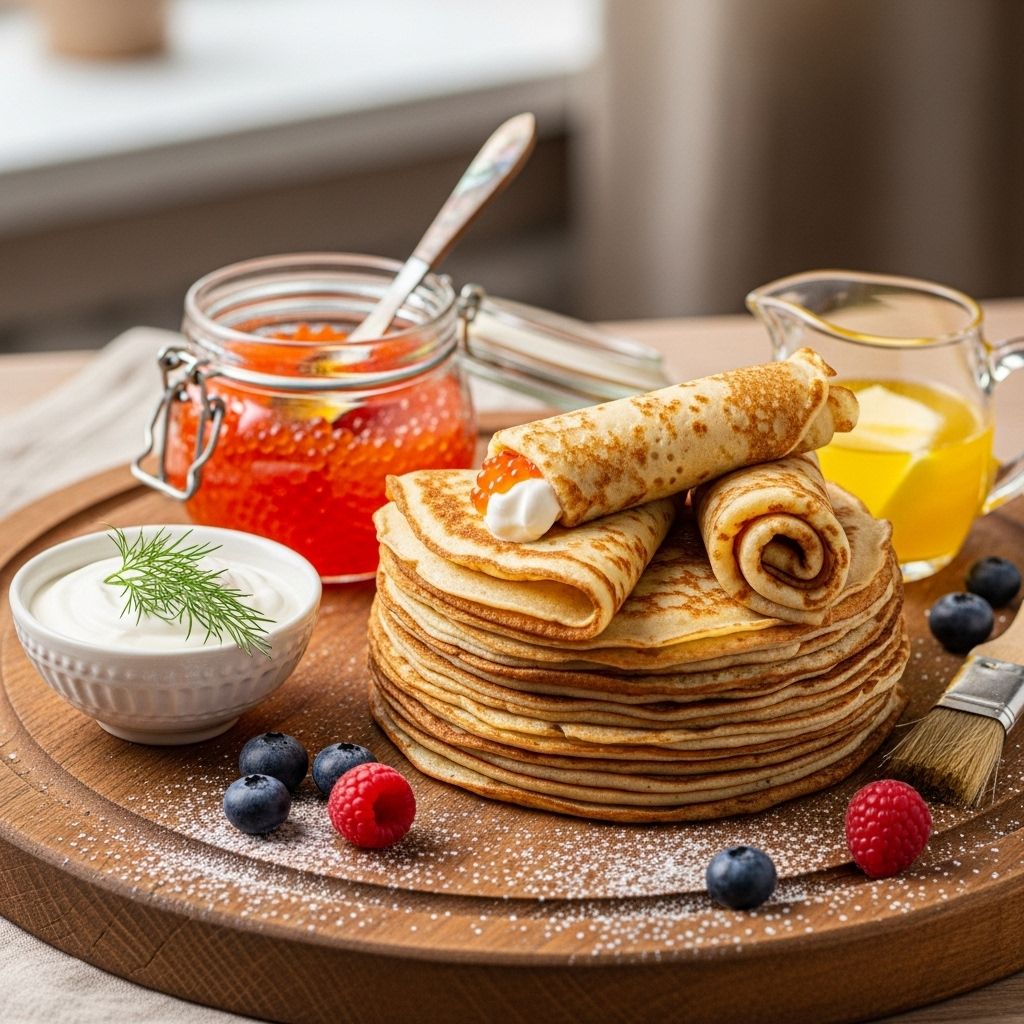
Image: HearthJunction Design Team
Easy Blini: The Authentic Russian Pancake Recipe
Blini are the soft, delicate pancakes beloved across Russia and beyond. With their golden edges and melt-in-the-mouth texture, these pancakes are not only a staple of Russian cuisine but also a symbol of celebration, warmth, and shared meals. Whether served plain, rolled with sweet or savory fillings, or topped with sour cream and fruit, blini are endlessly versatile and easy to make.
What Are Blini?
Blini (or blinchiki) are traditional thin, pan-sized Russian pancakes made from a simple batter. Thicker and slightly smaller than crepes, they are renowned for their delicate texture and lightly sweetened flavor. Unlike American pancakes, which are fluffy and thick, blini have a supple quality, making them ideal for rolling or folding around a variety of fillings.
- Thinner and wider than American pancakes, but not as thin as crepes.
- Commonly served at breakfast, brunch, or special occasions like Maslenitsa (Butter Week).
- Equally delicious with sweet or savory toppings.
Blini vs. Pancakes vs. Crepes
| Type | Key Ingredients | Texture | Typical Size | Serving Style |
|---|---|---|---|---|
| Blini | Flour, milk, egg, butter, salt, baking powder (sometimes yeast) | Soft, delicate, slightly thick | 6–8 inches diameter | Rolled, folded, or topped |
| American Pancake | Flour, milk, egg, butter, sugar, baking powder | Fluffy, thick | 4–5 inches diameter | Stacked, with butter and syrup |
| Crepe | Flour, milk, egg, butter, salt | Very thin, flexible | 10–12 inches diameter | Rolled, folded, with sweet or savory fillings |
Ingredients for Classic Blini
Blini come together with a few everyday pantry staples. This straightforward version creates pancakes that are soft, slightly sweet, and perfect for any meal.
- 1 cup all-purpose flour
- 3/4 teaspoon salt
- 1/2 teaspoon baking powder
- 3/4 cup plus 2 tablespoons milk (use whole or 2% for richer flavor)
- 1 large egg
- 1 tablespoon melted butter (plus more for the pan)
Optional Additions:
- Sugar (for a sweeter blini)
- Vanilla extract or zest for aroma
Step-by-Step: How to Make Blini
- Gather Ingredients: Before you begin, measure out all your ingredients for a smoother process.
- Mix Dry Ingredients: In a medium bowl, combine flour, salt, and baking powder. Whisk to mix thoroughly.
- Blend Wet Ingredients: In a separate bowl, whisk together the milk, egg, and melted butter until well blended.
- Combine Batter: Pour the wet mixture into the dry ingredients. Stir until just combined. The batter should be smooth and pourable, but not too runny.
- Heat the Pan: Melt 1 tablespoon of butter in a large skillet or nonstick frying pan over medium-low heat. Tilt to coat the surface evenly.
- Cook the Blini: For each pancake, drop one tablespoon of batter onto the skillet. Cook several at a time, spacing them apart. Bubbles will form on the surface—after 1½ to 2 minutes, flip each blini and cook the other side for about 1 minute or until golden brown.
- Drain Excess Butter: Transfer finished blini to a plate lined with paper towels to absorb any extra butter.
- Repeat: Continue with the remaining batter, adding more butter to the pan as needed.
Tips for Perfect Blini
- Don’t overmix the batter—this keeps the texture delicate and light.
- Adjust batter consistency with a splash of milk if it’s too thick.
- Cook over medium-low to prevent burning while ensuring thorough cooking.
- Keep cooked blini warm in a low oven while you finish the batch.
- Use a nonstick skillet or well-seasoned crepe pan for best results.
Serving Suggestions
Blini’s subtle flavor and inviting texture make them a canvas for a variety of toppings and fillings. Whether you prefer sweet or savory, there’s a blini for everyone:
- Sweet: A dollop of sour cream and berry preserves, honey, or maple syrup.
- Savory: Smoked salmon and dill, caviar, crème fraîche, sautéed mushrooms, or shredded chicken.
- Fresh Fruit: Sliced strawberries, blueberries, or bananas with whipped cream.
- Rolled or Folded: Fill with farmer’s cheese and raisins, or ham and cheese for a hearty meal.
Storing and Reheating Blini
- To Store: Cool leftover blini completely, then wrap in foil or plastic. Keep in the refrigerator for up to 3 days.
- To Freeze: Layer blini between sheets of parchment paper in an airtight container. Freeze for up to 1 month.
- To Reheat: Warm in a skillet over low heat or in a 300°F (150°C) oven, wrapped in foil, until heated through.
Variations and Regional Twists
Blini recipes across Eastern Europe showcase delicious regional twists and family traditions. Some prefer a yeasted batter, which results in a slightly tangier flavor and fluffier texture. Others use buckwheat flour for a nutty note.
- Yeasted Blini: Use yeast instead of baking powder; allow the batter to rise until doubled before cooking.
- Buckwheat Blini: Replace half the flour with buckwheat flour for a classic Russian flavor.
- Stuffed Blini: Wrap around cooked beef, mushrooms, or cheese for a satisfying snack or meal.
Russian Blini Traditions
Blini hold a special place in Russian cultural and culinary life. They’re intimately associated with Maslenitsa, the week-long festival marking the end of winter. During this time, families gather to eat plate after plate of blini, symbolizing the return of the sun and warmer days.
- Celebratory Meal: Blini are often the centerpiece of festive tables and holiday gatherings.
- Hospitality Symbol: Offering blini to guests is a traditional gesture of welcome and plenty.
Nutritional Information (Approximate Per Serving)
- Calories: 80
- Protein: 2g
- Carbohydrates: 10g
- Fat: 3g
- Fiber: 0.5g
Values will vary based on portion size and choice of toppings or fillings.
FAQs: Everything You Need to Know About Blini
What’s the difference between Russian blini and crepes?
While both are thin pancakes, Russian blini are slightly thicker and smaller than French crepes. Blini batter may use yeast or chemical leavening, while crepes typically do not use any rising agent. The result: blini are softer and a tad heartier, whereas crepes are ultra-thin and delicate.
Can I make blini ahead of time?
Yes. Cooked blini can be stored in the refrigerator for several days or frozen for longer storage. Reheat gently before serving for best texture.
What are the best toppings for blini?
Classic toppings include sour cream, caviar, smoked salmon, berry preserves, or sweetened farmer’s cheese. Blini’s mild flavor pairs well with both sweet and savory additions.
Can I make blini gluten-free?
Yes. Substitute a gluten-free all-purpose flour or use buckwheat flour (naturally gluten-free) for a traditional twist. The texture may vary slightly but will still be delicious.
How do I prevent blini from sticking to the pan?
Use a well-seasoned nonstick pan and make sure it’s properly preheated and greased with butter or oil before each batch.
Expert Tips for Homemade Blini Success
- Rest the batter for 5–10 minutes before cooking to allow bubbles to dissipate—this helps with even cooking.
- Blini are best served warm; if making ahead, reheat covered in the oven before filling or serving.
- Don’t hesitate to double the recipe—blini are a crowd-pleaser for brunches and parties.
- For parties, make mini blini and top with smoked salmon, dill, and a dab of crème fraîche for a stunning appetizer.
Blini Recipe Summary
- Preparation Time: 10 mins
- Cooking Time: 20 mins
- Total Time: 30 mins
- Servings: Makes about 12–16 blini
With just a handful of ingredients and a bit of technique, you can bring the comfort and tradition of Russian blini to your own table—no special equipment required.
Frequently Asked Questions (FAQs)
Q: Are Russian blini always made with yeast?
A: No, while some recipes use yeast for a fluffier texture, others—like this easy version—rely on baking powder, making them quicker to prepare.
Q: Are blini served only for breakfast?
A: Not at all! Blini are eaten at any time of day and are a favorite at festive gatherings, brunches, and as appetizers at formal events.
Q: Can I use non-dairy milk in the batter?
A: Yes, non-dairy alternatives like almond or oat milk work well, though they may slightly alter the flavor and texture.
Q: What is the best way to keep blini warm for guests?
A: Place cooked blini on a baking sheet in a low oven (about 200°F/95°C), covered with foil to prevent drying out, until ready to serve.
With this comprehensive guide in hand, you’re ready to master a beloved Russian classic. Whether shared at a family table or presented as elegant party fare, easy homemade blini are sure to delight.
References
- https://www.allrecipes.com/recipe/260537/easy-blini-russian-pancake/
- https://www.allrecipes.com/recipe/215962/blini-russian-pancakes/
- https://www.allrecipes.com/recipe/260538/blini-russian-pancakes/
- https://www.allrecipes.com/recipe/262165/blinis/
- https://www.littlebroken.com/easiest-delicious-russian-crepes-blini/
Read full bio of Shinta

